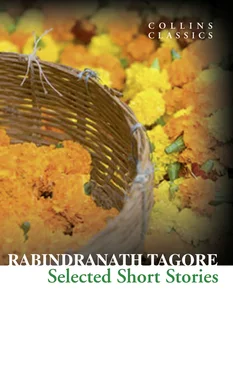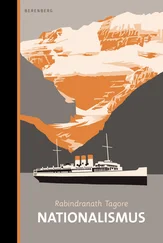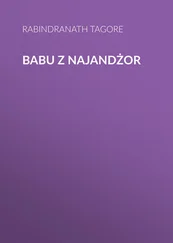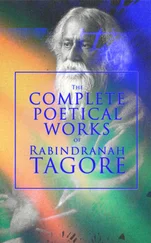SELECTED SHORT STORIES
Rabindranath Tagore
History of Collins History of Collins Life & Times The Hungry Stones The Cabuliwallah The Home-Coming Once there was a King The Child’s Return Master Mashai Subha The Postmaster The Castaway The Son of Rashmani The Babus of Nayanjore Classic Literature: Words and Phrases adapted from the Collins English Dictionary Copyright About the Publisher
In 1819, millworker William Collins from Glasgow, Scotland, set up a company for printing and publishing pamphlets, sermons, hymn books and prayer books. That company was Collins and was to mark the birth of HarperCollins Publishers as we know it today. The long tradition of Collins dictionary publishing can be traced back to the first dictionary William published in 1824, Greek and English Lexicon . Indeed, from 1840 onwards, he began to produce illustrated dictionaries and even obtained a licence to print and publish the Bible.
Soon after, William published the first Collins novel, Ready Reckoner ; however, it was the time of the Long Depression, where harvests were poor, prices were high, potato crops had failed and violence was erupting in Europe. As a result, many factories across the country were forced to close down and William chose to retire in 1846, partly due to the hardships he was facing.
Aged 30, William’s son, William II took over the business. A keen humanitarian with a warm heart and a generous spirit, William II was truly ‘Victorian’ in his outlook. He introduced new, up-to-date steam presses and published affordable editions of Shakespeare’s works and The Pilgrim’s Progress , making them available to the masses for the first time. A new demand for educational books meant that success came with the publication of travel books, scientific books, encyclopaedias and dictionaries. This demand to be educated led to the later publication of atlases and Collins also held the monopoly on scripture writing at the time.
In the 1860s Collins began to expand and diversify and the idea of ‘books for the millions’ was developed. Affordable editions of classical literature were published and in 1903 Collins introduced 10 titles in their Collins Handy Illustrated Pocket Novels. These proved so popular that a few years later this had increased to an output of 50 volumes, selling nearly half a million in their year of publication. In the same year, The Everyman’s Library was also instituted, with the idea of publishing an affordable library of the most important classical works, biographies, religious and philosophical treatments, plays, poems, travel and adventure. This series eclipsed all competition at the time and the introduction of paperback books in the 1950s helped to open that market and marked a high point in the industry.
HarperCollins is and has always been a champion of the classics and the current Collins Classics series follows in this tradition – publishing classical literature that is affordable and available to all. Beautifully packaged, highly collectible and intended to be reread and enjoyed at every opportunity.
Life & Times Life & Times The Hungry Stones The Cabuliwallah The Home-Coming Once there was a King The Child’s Return Master Mashai Subha The Postmaster The Castaway The Son of Rashmani The Babus of Nayanjore Classic Literature: Words and Phrases adapted from the Collins English Dictionary Copyright About the Publisher
About the Author
Rabindranath Tagore (1861–1941) is regarded as the father of Indian modern literature. He was a polymath and all-round creative talent who became something of a celebrity in the West during the second half of his lifetime. In 1878 Tagore moved to England with the intention of obtaining a degree. However, he was ill-suited to formal education and returned to India in 1880, having failed in his academic ambitions. Despite this, his exposure to English literature, including Shakespeare, had made a lasting impression on Tagore, and he resolved to fuse the European concept of the novel with elements of Indian culture and society.
Tagore came from a very wealthy Indian family, which explains his position to travel and to indulge his creative interests in a country where poverty and hardship were the lot of the common man. Despite his privileged background, he had strong empathy for his fellow human beings, which is largely why he was able to write stories and poems with humility and connection. This empathy came from managing his vast ancestral estates, where he would travel to collect rents and interact with the tenants. This exposed him to traditional storytelling and songs, as well as philosophical and religious ideas. This fertile environment, combined with his intellectual curiosity and imagination, resulted in prolific creativity.
Tagore’s stories are typically like a hybrid between fairytales and fables, as they incorporate elements of the traditional Indian belief system with philosophical insight. Many are short in length, simply because they have no need to be any longer. In fact, they are already filled with superfluous detail, so it would be quite possible to condense them further.
From a literary point of view, it is difficult to assess their merits, as the works we read in the West are merely translations. The stories themselves and their allegory survive intact, but the use of language is largely lost, primarily because the translator naturally gives a subjective interpretation of Tagore’s words and subsequent choice of English words. Also, the English language has a far richer vocabulary than Bengali, so an inevitable ambiguity results in terms of the literary forming of prose. Further complicating the issue is that Tagore also translated some of his own material into English.
Of course, Tagore’s tales also possess a distinctly Indian flavour in terms of their content and the behaviour of the characters. This exoticness certainly played its part in cementing Tagore’s appeal to the Western readership. In India, his fame was largely confined to the region in which he lived, and even then, only among the elite who were able to read.
It is difficult to discuss Tagore without comparing him with Rudyard Kipling (1865–1936). Kipling was also Indian, born of Caucasian stock, whose life ran parallel with that of Tagore. He too wrote many short stories and poems focused on the Indian subcontinent, which inevitably have a very similar feel. It would be fair to say that both writers shared a similar gift for the narrative and both were awarded the Nobel Prize for Literature; Kipling in 1907 and Tagore in 1913.
While Kipling was among the Anglo-Indian population who administered the British Empire in India, Tagore was a native Indian who resented the colonial presence. He wasn’t overtly political in his activities, but he wasn’t afraid to let his feelings be known, either. He died during World War II and so missed seeing India gain its independence by only a few years.
Kipling is sometimes seen as intrinsically racist and had a particular dislike for Bengalis, of which Tagore was one. As a consequence, there was no love lost between the two literary giants. Tagore had interactions with other white writers, but he ignored Kipling as if he were a pariah. Kipling could not, or would not, acknowledge Tagore’s work as having any literary worth, because his prejudice was so strong. He suggested that Tagore was a pretentious pseudo-intellectual, incapable of writing anything of value. Kipling’s view was typically imperialist due to his upbringing. He had been conditioned to believe that ‘good’ Indians were those who knew their place as servants to the ruling elite, so his racism towards Tagore was amplified by his indignation that a native Indian had risen to the same literary heights as himself. Like all racists, Kipling evidently needed to feel superior to mask his own insecurities, so Tagore’s success presented a psychological impasse to him as it didn’t fit with his model of the way things should be ordered to make him feel self-confident.
Читать дальше












